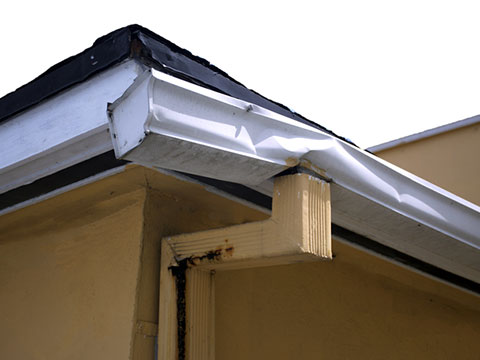Gutters play a critical role in protecting your home from water damage, but they don’t last forever. Over time, wear and tear, weather exposure, and improper maintenance can compromise their effectiveness. Recognizing when it’s time to replace your gutters can save you from costly repairs down the line. In this article, we’ll explore the top signs that indicate it’s time for new gutters and how replacing them can protect your home.
Why Gutters Matter
Gutters collect and redirect rainwater away from your home, safeguarding your foundation, roof, and landscaping. When they’re not functioning properly, water damage can wreak havoc on your property. That’s why knowing the signs of failing gutters is so important.
Top Signs Your Gutters Need Replacing
1. Visible Cracks or Splits
Small cracks may seem insignificant, but over time, they grow and allow water to leak out. This can damage the fascia boards, siding, and even the foundation.
- Tip: If you spot multiple cracks or splits, it’s time to replace the gutters rather than attempt repeated repairs.
2. Frequent Leaks
Occasional leaks can often be patched, but frequent leaks suggest the material is deteriorating. This is particularly common with older gutters made from vinyl or steel.
3. Gutters Are Pulling Away
Gutters should sit snugly against your roofline. If they’re pulling away or sagging, it’s a sign the fasteners are failing, or the gutters are too heavy due to water retention or debris buildup.
- Tip: If reattaching the gutters doesn’t solve the problem, consider upgrading to a more durable system.
4. Peeling Paint or Rust
Peeling paint on your home’s siding or rust on the gutters themselves is a clear indication of water overflow or prolonged exposure to moisture.
- Solution: Replace rusted or corroded gutters with a material like aluminum or copper, which are more resistant to weather damage.
5. Water Pooling Around Your Foundation
If you notice water pooling near the base of your home, your gutters aren’t effectively directing water away. This can lead to foundation cracks, mold growth, and basement flooding.
- Tip: Downspouts should extend at least 3–4 feet from the house. If this isn’t enough, consider installing splash blocks or drainage pipes.
6. Mold or Mildew Near the Foundation
Excess moisture caused by faulty gutters can create the perfect environment for mold and mildew to grow. This not only damages your property but can also pose health risks.
7. Sagging or Misshapen Gutters
Over time, gutters can warp or sag under the weight of debris, water, and ice. Sagging gutters can no longer efficiently direct water, making replacement necessary.
8. Separated Seams
Traditional sectional gutters have seams that can weaken and pull apart over time. If you notice frequent separation, it may be time to upgrade to seamless gutters for better durability and performance.
9. Ice Dams in Winter
If your gutters frequently freeze over, causing ice dams, this could indicate poor drainage or improper insulation in your attic. Persistent issues may require new gutters with better slope or heat cables to prevent freezing.
10. Outdated Design or Poor Functionality
Older gutter systems may not be equipped to handle the volume of rainwater in your area. Upgrading to modern, high-capacity gutters ensures better performance and prevents overflow.
Benefits of Replacing Your Gutters
- Prevent Water Damage: New gutters reduce the risk of leaks, overflow, and foundation damage.
- Boost Curb Appeal: Fresh gutters can enhance the look of your home, especially if you opt for stylish materials like copper or colored aluminum.
- Improve Functionality: Modern systems, such as seamless gutters, minimize leaks and require less maintenance.
- Increase Home Value: Functional, attractive gutters are a selling point for potential buyers.
Choosing the Right Gutters
When replacing your gutters, consider these factors:
- Material: Aluminum, copper, vinyl, and steel each have unique benefits. Aluminum is lightweight and rust-resistant, while copper offers a premium aesthetic.
- Type: Seamless gutters are more durable and require less maintenance than traditional sectional gutters.
- Size: Choose gutters that can handle your area’s average rainfall. Standard 5-inch gutters work for most homes, but 6-inch options are ideal for areas with heavy rain.
- Accessories: Add-ons like gutter guards and downspout extensions can improve functionality and reduce maintenance.
When to Call a Professional
If you notice multiple signs of gutter failure or are unsure about the condition of your system, it’s best to consult a professional. They can assess the damage, recommend a replacement, and install a system tailored to your home’s needs.
Conclusion
Your gutters are a crucial line of defense against water damage, but they require attention and, eventually, replacement. By recognizing the signs of failing gutters and acting promptly, you can protect your home and avoid costly repairs. Ready for an upgrade? Contact a professional to explore your options and ensure your home stays safe and dry.
Want more home maintenance tips? Check out our blog for expert advice and solutions!

